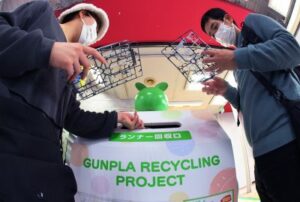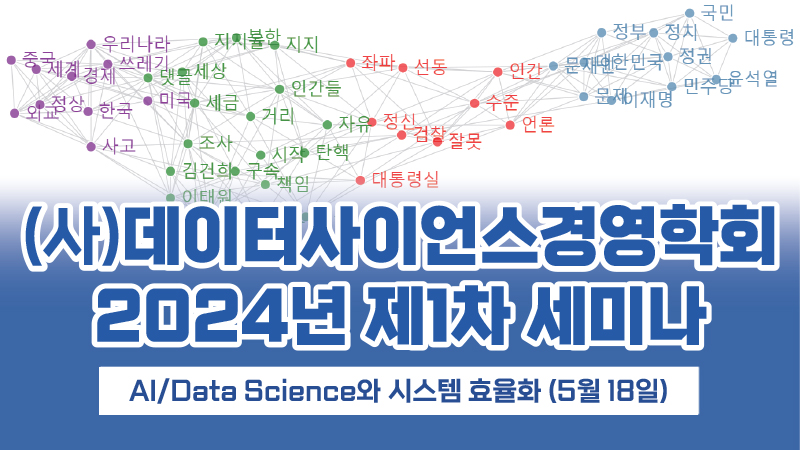[동아시아포럼] 환경 정책 선진국 일본, 동남아시아에도 관심 가져야
UN 플라스틱 협약 초안 발표, 2024년 성안 제정 일본, 폐플라스틱 저감 정책 이미 다수 경험 태평양 지역 공조, 책임감 있는 역할 수행해야
[동아시아포럼]은 EAST ASIA FORUM에서 전하는 동아시아 정책 동향을 담았습니다. EAST ASIA FORUM은 오스트레일리아 국립대학교(Australia National University) 크로퍼드 공공정책 학교(Crawford School of Public Policy) 산하의 공공정책과 관련된 정치, 경제, 비즈니스, 법률, 안보, 국제관계 및 사회에 대한 연구·분석 플랫폼입니다.
저희 폴리시코리아(The Policy Korea)와 영어 원문 공개 조건으로 콘텐츠 제휴가 진행 중입니다.
지난 4일 유엔환경계획(UNEP)이 UN 플라스틱 오염 규제 협약 초안(Zero Draft)을 발표했다. 초안에서는 ‘플라스틱의 수명 주기 전반에 걸친 오염 예방, 점진적 감소 및 제거’가 목표로 제시됐다. 전문가들은 이번 협약 배경에 대해 플라스틱 폐기물 배출로 인한 해상 오염을 주요 요인으로 지목했다. 덧붙여 중국, 인도네시아, 필리핀 등 일부 아시아 국가의 폐플라스틱 해양 유출 문제를 지적하며 개선을 요구했다.

파리 기후 협약 이후 가장 중요한 친환경 협약
UNEP가 발표한 이번 합의 초안은 지난해 3월 ‘플라스틱 오염에 관한 신규 국제 협약’(이하 ‘UN 플라스틱 협약’) 합의를 시작으로 2024년 말 제정 목표에 따라 발표됐다. UN 플라스틱 협약은 2015년 파리 협정과 같이 법적 구속력이 있는 합의안이다. UN은 초안을 발표하며 “플라스틱 협약은 파리 기후 협약 이후 가장 중요한 친환경 협약이 될 것”이라고 중요성을 강조했다.
UN이 세계 플라스틱 폐기물 배출 규제에 나선 주된 이유 중 하나는, 플라스틱 폐기물로 인한 해양 오염이다. 다른 폐기물에 비해 바다로 배출되기 쉬운 플라스틱은 미세 플라스틱 형태로 자연 분해되기 전까지 약 400년간 해양을 오염시킨다. 이같은 미세 플라스틱은 해류를 따라 전 세계 바다를 부양해 해양 생물은 물론 사람에게도 심각한 악영향을 끼치고 있다.
국제 과학학술지 사이언스어드밴시스(Science Advances)는 전 세계의 하천에서 배출되는 플라스틱 폐기물이 전체 폐플라스틱 해양 오염 원인의 81%를 차지한다고 발표했다. 그중 폐플라스틱 배출량 10위권 하천은 대부분 동남아시아 지역인 것으로 나타났다. 특히 필리핀 수도 마닐라에 위치한 파시그 강(Pasig River)의 폐플라스틱 배출량은 전 세계 해양 오염 비율 중 무려 6.45%를 차지하며 1위에 선정됐다.
사이언스어드밴시스의 발표는 아시아 지역의 플라스틱 폐기물 배출량 저감 촉구를 시사한다. 세계경제포럼(WEF)이 발간한 2020년 환경 보고서에 따르면 인도네시아의 플라스틱 폐기물 유출량을 대도시, 중소도시, 농촌·외곽지역으로 구분해 조사한 결과 중소도시와 농촌·외곽지역에서 무단투기 되거나 부실 관리된 폐플라스틱이 전체의 72%를 차지하는 것으로 나타났다. 대도시의 플라스틱 유출량은 전체 10%에 불과했다. 동남아시아 지역 대부분이 중소도시와 농촌·외곽지역으로 구성된 것을 고려할 때 사실상 동남아시아 전 지역에서 플라스틱 쓰레기가 쏟아지고 있는 셈이다.
일본 친환경 정책 진행 과정
환경 전문가들은 2035년까지 폐플라스틱 100% 재활용을 목표로 적극적인 플라스틱 자원 순환 정책을 펼치고 있는 일본이 동남아시아의 모범 사례가 될 수 있다고 조언한다. 아시아 지역에서 이른 경제 성장을 거둔 일본은 타 국가에 비해 일찍 환경 문제를 대면하고 선조치하는 등 순차적인 친환경 정책을 펼쳐 왔다.
일본이 진행한 첫 번째 친환경 정책은 폐기물을 수거하고 처리하는 것이다. 1961년까지만 해도 일본의 총배출량 대비 폐기물(쓰레기) 수거 비율은 46.6%에 불과했다. 이에 1960년 중반부터 친환경 정책에 관심을 가지기 시작한 일본 정부는 폐기물 수거 및 처리 정책을 제정해 폐기물 수거 서비스, 폐기물 소각장, 폐기물 에너지화 설비, 매립지 건설 등 폐기물 처리 관련 보조금을 지자체에 지급했다. 그 결과 1970년대 말 일본의 총배출량 대비 폐기물 수거 비율은 92.6%에 달했다. 현재도 일본 가정에서 배출되는 전체 폐기물량의 99% 이상이 수거되고 있다. 일본은 배출 폐기물 대부분을 수거하는 정책을 통해 무단투기 및 부실 관리되는 폐기물을 효과적으로 감소시켰다.
폐기물 수거와 더불어 전국 각 지역에 폐기물 처리 시설을 개발해 지역별 폐기물 처리 용량을 증가시키는 사업도 진행했다. 일본 정부는 폐기물 에너지화 플랜트 사업과 폐기물 매립지 건설 사업 자체를 지역 경제 활성화를 위한 일종의 ‘뉴딜’ 사업으로 판단해 폐기물 관리에 대한 지자체 간 협력을 장려했다. 그 결과 1961년부터 1979년까지 약 537개의 폐기물 관리를 위한 지자체 간 협약이 체결됐다.
그러다 1980년대 후반 일본의 폐기물 정책은 새로운 국면을 맞았다. 경제 성장에 따라 플라스틱 사용량 급증해 가정과 산업 폐기물 배출량이 각각 21%, 26% 증가한 것이다. 이어 기존 건설된 매립지 용량 초과와 산업 폐기물 불법 투기 문제도 발생했다. 이에 일본은 1991년 ‘재활용 자원의 이용 촉진에 관한 법률’을 지정해 분리수거와 재활용을 위해 라벨 부착을 의무화하는 폐기물 재활용 촉진 정책을 전개했다.
이어 1995년엔 ‘용기 및 포장재의 분리수거 및 재활용 촉진에 관한 법률’을 제정해 생산자책임재활용(EPR) 제도를 시행했다. 해당 제도는 포장재를 사용한 생산자에게 일정 비율 이상의 포장재 재활용을 의무화하고 미 이행 시 재활용에 필요한 비용을 일본 정부가 지정한 재활용 기관에 의무 납부하게 하는 내용을 골자로 한다. 기존 소비자들에게 전가되던 재활용 책임을 생산자에게 지운 셈이다.
예컨대, 초밥 도시락을 생산하는 업체는 도시락 용기를 자체적으로 재활용하는 시스템을 필수적으로 운영해야 한다. 소비자가 마트에 납품된 도시락을 구매하면 해당 마트에 도시락 용기를 다시 반납할 수 있게 하는 식이다. 초밥 도시락 업체는 마트로 수거된 도시락 용기를 회수해 세척 및 플라스틱 코팅 과정을 거쳐 다시 재사용한다. 1997년까지 유리와 페트(PET)병에만 적용됐던 EPR은 2000년 종이와 플라스틱 용기로 확대 적용됐다. 현재 일본은 EPR를 통해 플라스틱 폐기물의 87%를 재활용하거나 열 회수 과정을 거쳐 처리한다.
자연환경에 유출되는 플라스틱에 대해선 출처와 종류를 파악해 맞춤형 대응책을 적용한다. 2020년 환경 기업 피리카(Pirika)와 일본 지자체 20곳, 대학교 2곳에서 합동 진행한 환경 조사 결과 일본의 강과 호수 미세 플라스틱의 23.4%와 15%가 인조 잔디와 서방형(약재가 서서히 배출되는 형태) 비료 캡슐인 것으로 나타났다. 이에 일본 전국농업협동조합연합회는 기존 서방형 비료 캡슐 소재를 생분해성 플라스틱으로 대체하겠다고 발표했다.
아울러 일본 정부는 쉽게 유출될 수 있는 플라스틱 생활 쓰레기에 대한 환경 리스크를 발견하고 이를 억제하기 위해 지난해 ‘플라스틱 자원순환 촉진에 관한 법률’를 제정했다. 해당 법에 따라 플라스틱 수저, 교반기, 빨대 등 식당이나 소매점에서 무상 제공하던 행위를 규제하고 제품별 수거 방안을 마련해 다양한 제품의 폐플라스틱을 재활용할 수 있게 했다.
환경 오염의 피해자는 우리 모두, 공생을 위한 선도 필요
태국, 필리핀 등 동남아시아 국가에도 폐기물 관련 제도가 존재한다. 하지만 제대로 시행되는 경우는 드물다. 다수의 폐기물이 발생하는 농촌·외곽지역까지 폐기물 관리 시스템을 확장할 행정 시스템과 예산이 부족하기 때문이다. 이런 현실적인 문제로 인해 비분해성 플라스틱을 생분해성 플라스틱으로 대체하는 선진국형 폐기물 감소 정책은 동남아시아 지역에서 시행되기가 사실상 불가능하다. UN 플라스틱 협약이 체결되더라도 동남아시아의 개발도상국들이 엄격해진 국제 기준을 단기간에 달성하기 힘들 것으로 예측된다.
앞서 언급했듯 일본은 1960년대부터 폐기물 수거와 처리, 재활용 유도 및 강제 규제, 재활용 대상 범위 확대까지 체계적인 정책 진행을 펼쳐 폐플라스틱 배출량을 감소시켰다. 전문가들은 수십 년간 축적된 일본의 폐기물 저감 노하우를 낙후된 동남아시아 지역에 전수하는 방법으로, 해당 지역에 환경적 이니셔티브를 조성할 수 있을 것으로 기대한다. 현재 일본은 대학, 연구소, 국제협력기구 지원 등을 통해 동남아시아 국가를 대상으로 폐플라스틱에 대한 인식 개선 사업, 개선 교육 사업 등을 지원 중이다.
다만 파리 협약과 마찬가지로 구속력이 있는 UN 플라스틱 협약은 경제적으로 낙후된 동남아시아의 성장을 더욱 제한할 것으로 보인다. 게다가 특정 국가만 환경 오염으로 인한 병폐를 피해 갈 수도 없는 노릇이다. 태평양을 공유한 지역 구성원으로서 공동 성장과 상생을 위해 환경 선도국의 과감한 지원이 필요하다.
Japan’s pollution pedagogy
In 2022 the UN Environment Programme’s Intergovernmental Negotiating Committee on Plastic Pollution has argued for a new international treaty on plastic pollution. It is common knowledge that plastics negatively affect ecosystems and the health of animals and potentially, of people. Developing countries in Asia such as China, Indonesia and the Philippines are big sources of plastic leakage into the ocean.

They could well turn to Japan for inspiration on how to better manage plastic waste, particularly the expansion of waste collection services to rural areas where there is a higher proportion of mismanaged waste. For example, a 2020 report published by the World Economic Forum estimated the fate of Indonesia’s plastic waste across four main categories — megacities, medium-sized cities and rural and remote areas. Medium-sized cities and rural areas account for around 72 per cent of mismanaged waste. While megacities only accounted for around 10 per cent of the total leakage of plastics, rural areas accounted for 49 per cent of the leakage into the sea, lakes and rivers.
Waste collection services are provided to almost all households in Japan, but in 1961 the percentage of waste collection coverage was only 46.6 per cent. By the end of the 1970s, the percentage of waste collection coverage had reached 92.6 per cent. From the 1960s, the central government increased subsidies for local governments to invest in methods of waste disposal such as waste incineration plants, waste-to-energy plants and landfills.
The Japanese government also promoted inter-municipal cooperation on waste management because waste-to-energy plants and landfills achieve economies of scale. Some 537 inter-municipal associations for waste management were established between 1961 and 1979.
A few cases of similar regional waste management approaches do exist in developing Asian countries, such as India, Thailand and the Philippines. But even in these countries, regional waste management schemes are limited. This is due to a lack of national policies and funding mechanisms to expand waste management facilities to smaller cities and rural areas.
In the latter half of the 1980s, household and industrial waste generation in Japan increased 21 per cent and 26 per cent respectively, due to economic growth and a massive uptick in the usage of plastics. Japan faced a shortage of landfill sites and an increase in illegal dumping of industrial waste around 1990, prompting the Japanese government to promote recycling. In 1991, the Law for the Promotion of Utilization of Recycled Resources enabled the government to require industries to implement designs for recycling and labelling waste for separate collection.
Extended producer responsibility (EPR) was tried for the first time in Japan with the 1995 Act on the Promotion of Sorted Collection and Recycling of Containers and Packaging. The Act required producers who use containers and packaging to pay a recycling fee to the Japan Containers and Packaging Recycling Association, a government-designated organisation responsible for overseeing recycling services. The Act also requires consumers to manage the return of material for recycling and allows municipalities and producers to organise their own recycling programs.
For example, a producer of polystyrene trays for sashimi and sushi has its own recycling program. Recycling bins for used polystyrene trays are collected at supermarkets and stores. Consumers wash the trays at home and return trays to designated bins when shopping. The trays are then collected when trucks deliver new trays to shops. The collected waste trays are recycled into new polystyrene trays, but the surfaces of the tray are coated with virgin plastic.
EPR was applied to glass and polyethylene terephthalate (PET) bottles in 1997. In 2000, it was also applied to paper and plastic containers. Now 87 per cent of plastic waste is recycled or undergoes thermal recovery in Japan.
It is critical to identify the sources and types of plastics that are leaking into the environment and to apply appropriate countermeasures. Attention is now being paid to other sources of plastic waste in Japan. The Act on the Promotion of Resource Circulation for Plastics that came into force in 2022 promotes recycling of plastic waste other than packaging and containers, such as that of plastic toys and clothes hangers.
In fiscal year 2020, a microplastics survey conducted in rivers and lakes by Japanese start-up Pirika and its partner organisations — including 20 local governments and two universities — found that artificial turf and capsules of slow-release fertiliser were the dominant microplastics in Japan at 23.4 per cent and 15 per cent, respectively. In response, the National Federation of Agricultural Cooperative Associations declared that slow-release fertiliser capsules made from non-biodegradable plastics would be replaced with biodegradable plastic capsules.
The 2022 Act on Promotion of Resource Circulation for Plastics promotes the recycling of various plastic products by regulating the free-of-charge supply of plastic cutlery, stirrers and straws by restaurants and retailers. The law also covers the provision of toothbrushes, razors and other items by hotels, as well as hangers and bags by dry cleaners.
The Japanese government is now supporting Southeast Asian countries with their plastic pollution by organising training courses through the Japan International Cooperation Agency. And the Japanese Ministry of Environment supported the establishment of the Regional Knowledge Centre for Marine Plastic Debris under the Economic Research Institute for ASEAN and East Asia in 2019, which disseminates responsible environmental practices in the region through online and in-person public outreach. The ASEAN–Japan Centre has also held marine plastic debris awareness programs in several schools across Japan and some ASEAN countries.
Reducing plastics through recycling and replacement with other materials is critical, but it is difficult to do so in a short period of time, particularly in developing countries. Effective waste management is dependent on enhancing capacity in the region, minimising the use of plastics and implementing and promoting recycling through EPR schemes. Japan’s experience provides a successful model which can be the basis of similar initiatives to deal with this problem in Southeast Asia.
원문의 저자는 아세안·동아시아경제연구소(ERIA) 환경 분야 대통령 선임 고문이자 일본 아시아경제연구소(IDE-JETRO)의 수석 선임 연구원인 미치카즈 코지마(Michikazu Kojima)입니다.





![[동아시아포럼] 미국은 한국의 자체 핵 개발 막을 수 있을까](https://pabii.com/wp-content/uploads/sites/2/2023/11/2023-04-27T205036Z_2007022201_RC22N0A27RLA_RTRMADP_3_USA-SOUTHKOREA-768x509-1.jpeg)
![[동아시아포럼] 아세안은 일본과의 협력 관계에 있어 더욱 영리해져야 한다](https://pabii.com/wp-content/uploads/sites/2/2023/11/Chheang-1-400x267-1.jpg)
![[동아시아포럼] 친중 vs 독립, 대만 대선의 향방은](https://pabii.com/wp-content/uploads/sites/2/2023/11/2023-07-14T104657Z_1422484894_RC2V22AOH99Z_RTRMADP_3_TAIWAN-PARAGUAY-400x267-1.jpg)
![[동아시아포럼] 국가주의와 확전적 전략, 중국 외교정책에 대한 오해](https://pabii.com/wp-content/uploads/sites/2/2023/11/기사-2.jpg)
![[동아시아포럼] 인도네시아, 테슬라 새 공장 유치 성사될까?](https://pabii.com/wp-content/uploads/sites/2/2023/11/기사-6.jpg)
![[동아시아포럼] 일본이 저출산과 인구 감소에 대처하는 방법](https://pabii.com/wp-content/uploads/sites/2/2024/03/japan_EAF_20240312-768x546.jpg)










